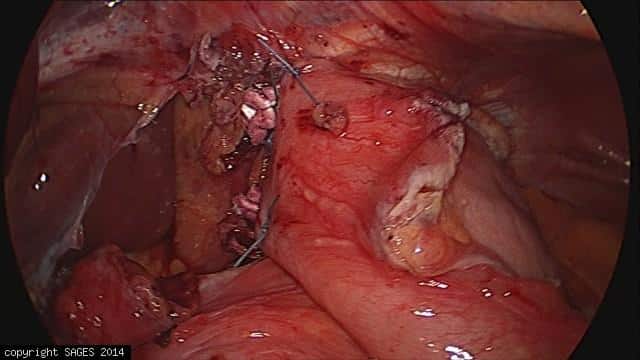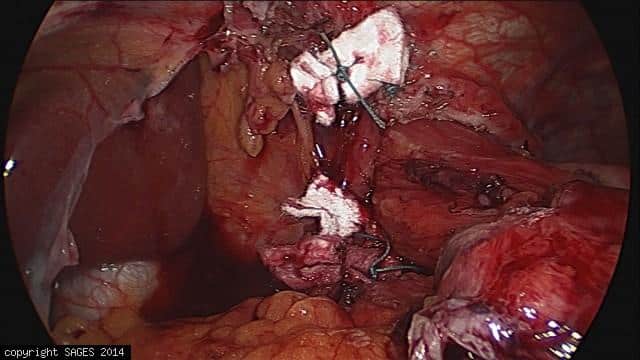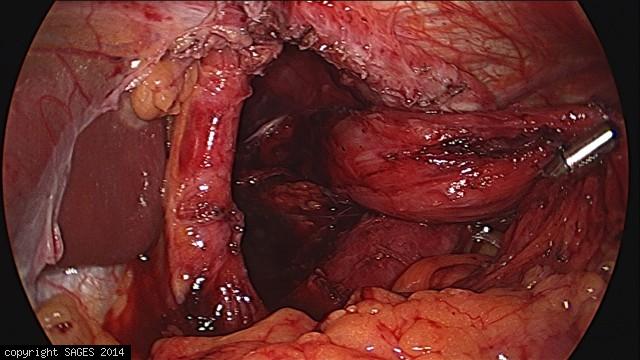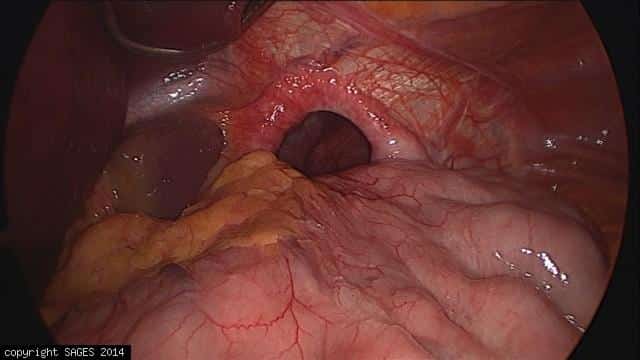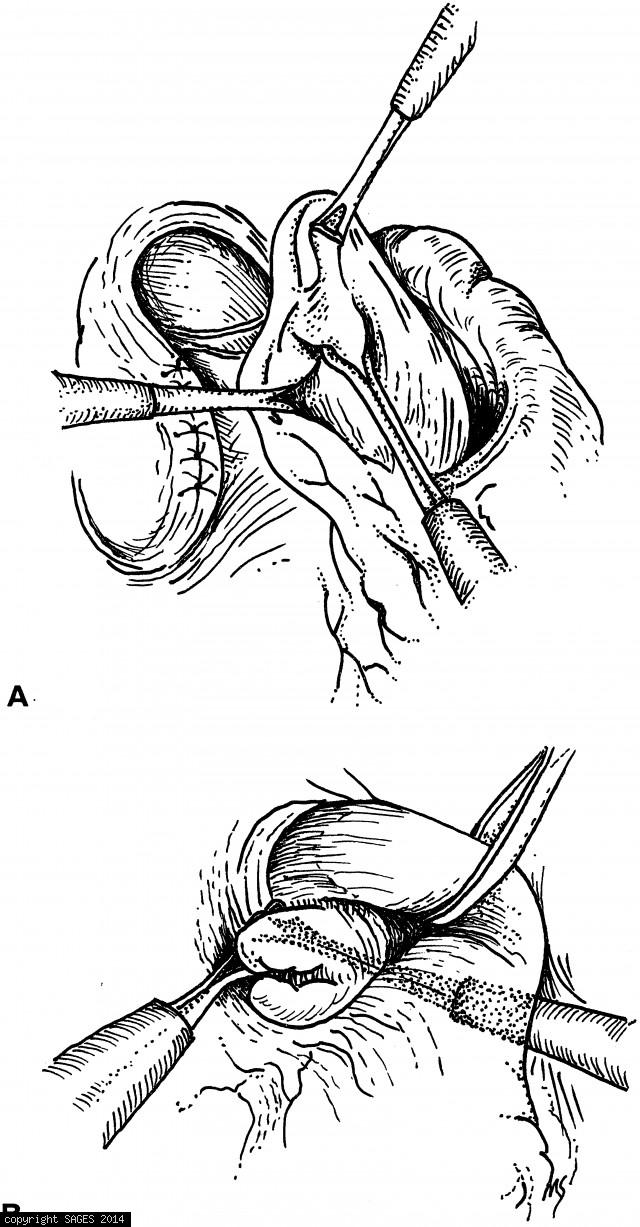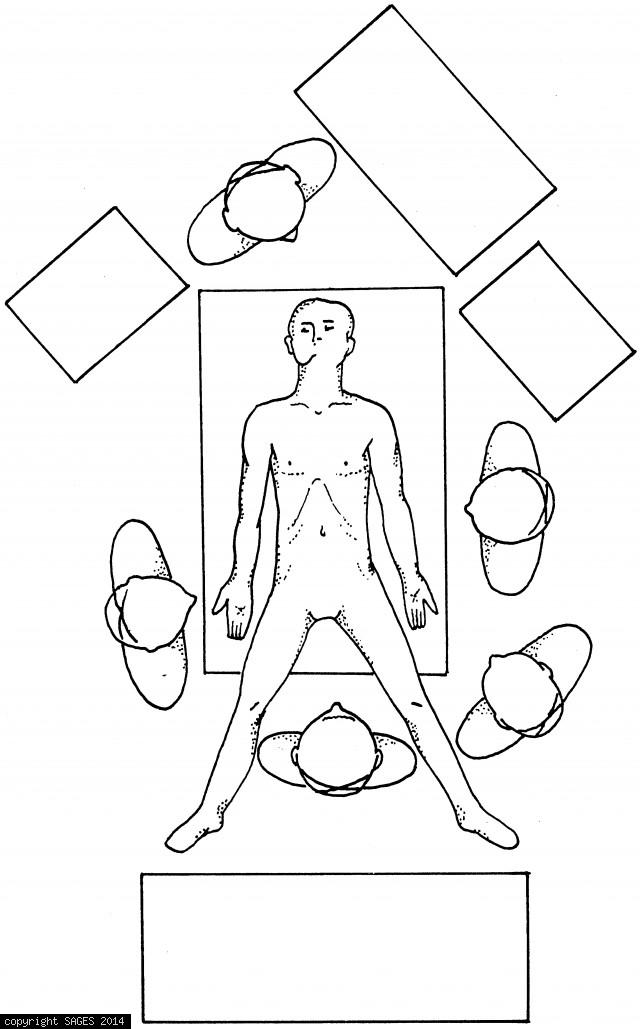Paraesophageal Hernia – anterior fundoplication
This is an image of an anterior fundoplication after repair of a paraesophageal hernia
Paraesophageal Hernia – repaired
This is an image of a paraesophageal hernia after primary suture repair
Paraesophageal Hernia – dissected
This is an image of the hiatus with a paraesophageal hernia after dissection
Paraesophageal Hernia – reduced
This is an image of a paraesophageal hernia after reduction of the entire stomach from the chest
Paraesophageal hernia before reduction
This is an image of the esophageal hiatus with a paraesophageal hernia with the entire stomcah in the chest
Proper Orientation of the Fundic Wrap
The fundoplication is sutured in place with a single U-stitch of 2–0 Prolene pledgeted on the outside. A 60-French mercury-weighted bougie is passed through the gastroesophageal junction prior to fixation of the wrap to assure a floppy fundoplication. Ins
Bagcock Clamp
A. Placement of Babcock clamp on the posterior fundus in preparation for passing it behind the esophagus to create the posterior or right lip of the fundoplication. To achieve the proper angle for passage, place the Babcock through the left lower trocar.
Patient Position and Room Setup
Patient positioning and room setup for laparoscopic fundoplication. The patient is placed with the head elevated 45 degrees in the modified lithotomy position. The surgeon stands between the patient’s legs. One assistant, on the surgeon’s right, retracts
